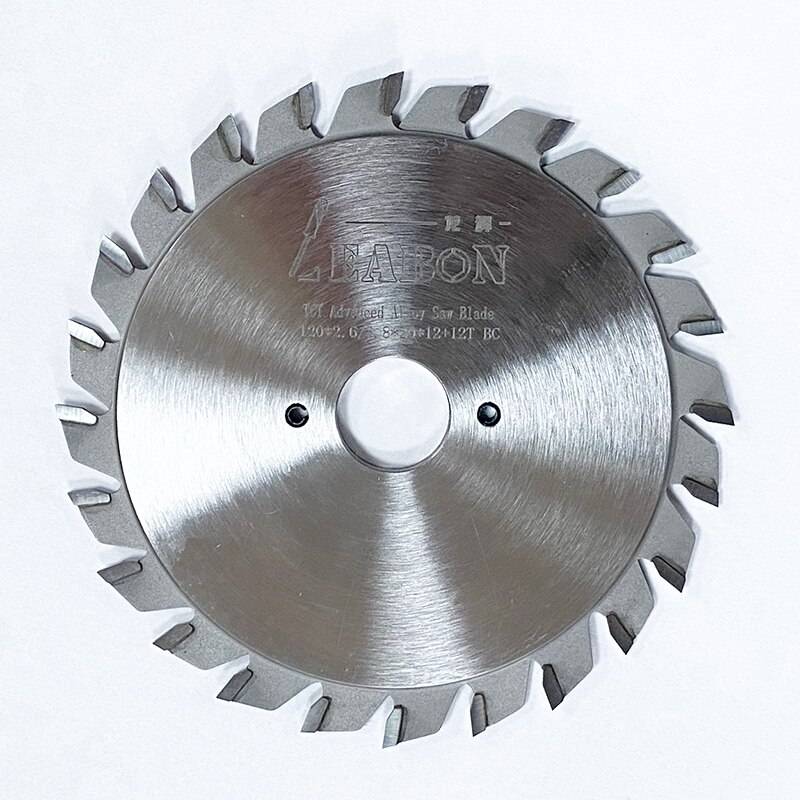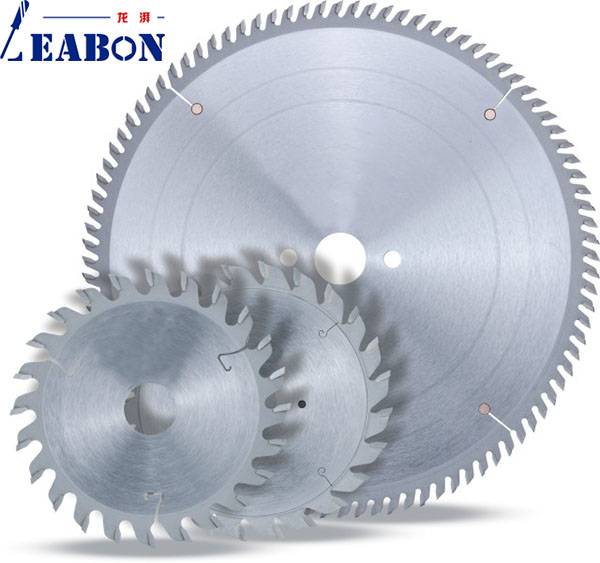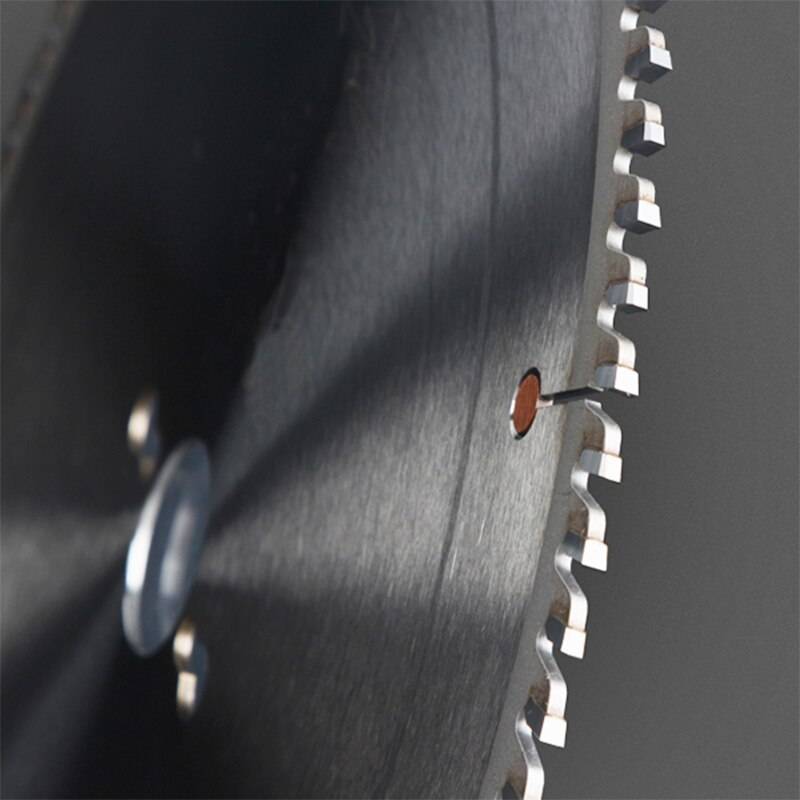Woodworking Accessories Tips
What You Must Know About Woodworking Circular Saw Blade

Circular saw blades are the most commonly used cutting tools for wood product processing. The quality of cemented carbide saw blades is closely related to the quality of processed products. The correct and reasonable selection of carbide saw blades is of great significance for improving product quality, shortening the processing cycle, and reducing processing costs. Cemented carbide saw blades include various parameters such as the type of alloy blade, the material of the substrate, the diameter, the number of teeth, the thickness, the tooth profile, the angle, and the aperture. These parameters determine the processing capacity and cutting performance of the round saw blade.
When choosing a circular saw blade, the saw blade should be selected correctly according to the type of sawing material, the thickness, the speed of sawing, the direction of sawing, the feeding speed, and the width of the saw road. So how does it choose?
(1) Selection of cemented carbide types
Commonly used types of cemented carbide are tungsten-cobalt (code YG) and tungsten-titanium (code YT). Because tungsten-cobalt-based cemented carbide has better impact resistance, it is more widely used in the wood processing industry. The commonly used model in wood processing is YG8-YG15. The number after YG indicates the percentage of cobalt content. As the cobalt content increases, the impact toughness and bending strength of the alloy will increase, but the hardness and wear resistance will decrease. Choose according to the actual situation.
(2) Selection of substrate
- 65Mn spring steel has good elasticity and plasticity, economical material, good heat treatment hardenability, low heating temperature, easy deformation, and can be used for saw blades that require low cutting requirements.
- Carbon tool steel has high carbon content and high thermal conductivity, but its hardness and wear resistance drop sharply when exposed to temperatures of 200℃-250℃, heat treatment deformation is large, hardenability is poor, and long tempering time is easy to crack. Manufacture economical materials for tools such as T8A, T10A, T12A, etc.
- Compared with carbon tool steel, alloy tool steel has better heat resistance, wear resistance and better handling performance. The heat deformation temperature is 300℃-400℃, which is suitable for manufacturing high-grade alloy circular saw blades.
(3) Choice of diameter
The diameter of the saw blade is related to the sawing equipment used and the thickness of the sawing workpiece. The diameter of the saw blade is small, and the cutting speed is relatively low; the large diameter of the saw blade has higher requirements on the saw blade and sawing equipment, and the sawing efficiency is also high. The outer diameter of the saw blade is selected according to the different circular saw machine models to use the saw blade with the same diameter.

The diameters of standard parts are: 110MM (4 inches), 150MM (6 inches), 180MM (7 inches), 200MM (8 inches), 230MM (9 inches), 250MM (10 inches), 300MM (12 inches), 350MM ( 14-inch), 400MM (16-inch), 450MM (18-inch), 500MM (20-inch), etc., the bottom scoring saw blades of precision panel saws are mostly designed to be 120MM.
(4) Selection of the number of teeth
The number of teeth of the saw tooth, generally speaking, the more the number of teeth, the more cutting edges in a unit time, the better the cutting performance, but the more cutting teeth need to use more cemented carbide, the price of the saw blade is higher, but the teeth are too dense , The chip capacity between the teeth becomes smaller, which is easy to cause the saw blade to heat up; in addition, there are too many teeth, when the feed amount is not matched properly, the cutting amount of each tooth is small, which will aggravate the friction between the cutting edge and the workpiece, and affect the service life of the cutting edge . Usually the tooth spacing is 15-25mm, and a reasonable number of teeth should be selected according to the material to be sawed.
(5) Choice of thickness
The thickness of the saw blade theoretically we hope that the thinner the saw blade is, the better, the saw kerf is actually a consumption. The material of the alloy saw blade base and the process of manufacturing the saw blade determine the thickness of the saw blade. If the thickness is too thin, the saw blade is easy to shake when working, which affects the cutting effect. When choosing the thickness of the saw blade, the stability of the saw blade and the material to be cut should be considered. Some special-purpose materials require specific thickness and should be used according to equipment requirements, such as slotting saw blades, scoring saw blades, etc.

(6) Choice of tooth profile
Commonly used tooth shapes are left and right teeth (alternating teeth), flat teeth, ladder flat teeth (high and low teeth), inverted trapezoidal teeth (inverted cone teeth), dovetail teeth (hump teeth), and the rare industrial grade three Left and right, left and right flat teeth, etc.
- The left and right teeth are the most widely used, the cutting speed is fast, and the grinding is relatively simple. It is suitable for cutting and cross sawing various soft and hard solid wood profiles and density boards, multi-layer boards, particle boards, etc. The left
and right teeth equipped with anti-repulsion protection teeth are dovetail teeth, which are suitable for longitudinal cutting of various boards with tree nodes.
Timber; left and right tooth saw blades with negative rake angles are usually used for veneer sawing because of their sharp teeth and good cutting quality.
- The flat tooth saw blade is rougher, the cutting speed is slower, and the grinding is the simplest. It is mainly used for sawing of ordinary wood with low cost. It is mostly used for aluminum saw blades with a smaller diameter to reduce adhesion during cutting, or for grooving saw blades to keep the bottom of the groove flat.
- Ladder flat teeth are a combination of trapezoidal teeth and flat teeth. The grinding is more complicated. It can reduce veneer cracking during sawing. It is suitable for sawing of various single and double veneer wood-based panels and fireproof boards. In order to prevent sticking, aluminum saw blades often use a saw blade with a large number of teeth of the ladder flat tooth.
- The inverted ladder teeth are often used in the bottom groove saw blade of the panel saw. When sawing the double-faced wood-based panel, the groove saw adjusts the thickness to complete the grooving of the bottom surface, and then the main saw completes the sawing of the board. Prevent edge chipping in the saw edge.
In summary, the right and left teeth should be selected for sawn wood, particle board, and medium-density board, which can sharply cut the wood fiber structure and make the incision smooth; in order to maintain a flat groove bottom, use flat teeth or use left and right flat Combination teeth; Ladder flat teeth are generally used for sawing veneer panels and fireproof boards. Due to the large cutting rate of computer cutting saws, the alloy saw blades used are relatively large in diameter and thickness, with a diameter of about 350-450mm and a thickness of 4.0-4.8 Between mm, most use ladder flat teeth to reduce chipping and saw marks.
(7) Choice of sawtooth angle
The angle parameters of the saw tooth part are more complicated and the most professional, and the correct selection of the angle parameters of the saw blade is the key to determining the quality of the sawing. The most important angle parameters are the rake angle, the rear angle and the wedge angle.
The rake angle mainly affects the force consumed by sawing wood chips. The larger the rake angle, the better the sharpness of the saw tooth cutting, the lighter the sawing, the more labor-saving the pushing. Generally, when the material to be processed is soft, choose a larger rake angle, otherwise, choose a smaller rake angle.
(8) Choice of aperture
The aperture is a relatively simple parameter, which is mainly selected according to the requirements of the equipment, but in order to maintain the stability of the saw blade, it is best to choose a larger aperture for the saw blade above 250mm. At present, the diameter of standard parts designed in China is mostly 20MM holes for 120MM and below, 25.4MM holes for 120-230MM, 30 holes for more than 250, and some imported equipment also have 15.875MM holes. The mechanical aperture of multi-blade saws is relatively complicated. , There are many keyways to ensure stability. Regardless of the size of the aperture, it can be modified by a lathe or a wire cutting machine. The lathe can turn the gasket into the large hole, and the wire cutting machine can expand the hole as required by the equipment.
A series of parameters such as the type of alloy cutter head, the material of the substrate, the diameter, the number of teeth, the thickness, the tooth profile, the angle, the aperture, etc. are combined into the whole of the carbide saw blade. It is necessary to select and match reasonably to better exert its advantages.
